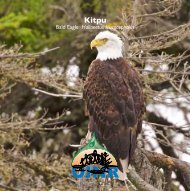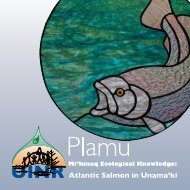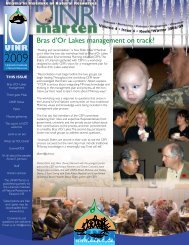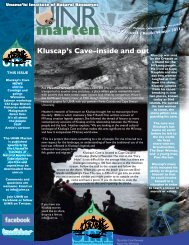Mi'kmaq Ecological Knowledge Distribution of Culturally Significant ...
Mi'kmaq Ecological Knowledge Distribution of Culturally Significant ...
Mi'kmaq Ecological Knowledge Distribution of Culturally Significant ...
Create successful ePaper yourself
Turn your PDF publications into a flip-book with our unique Google optimized e-Paper software.
Given the large list <strong>of</strong> Mi’kmaq culturally important plants, the large geographic area <strong>of</strong><br />
NewPage leased parcels, and Mi’kmaq plant gathering areas identified in the earlier phase,<br />
it was determined that all Cape Breton Island would be mapped for all plant species<br />
identified by Mi’kmaq Elders and gatherers. It was determined that a method <strong>of</strong> mapping<br />
was required to represent each plant’s favoured supporting habitat in a single map specific<br />
to each plant.<br />
A plant species mapping and analysis-decision making tool for Mi’kmaq and project<br />
partners must be explicit for duplication <strong>of</strong> results and accessible to a wide range <strong>of</strong><br />
technical skills, as to be understood by end-users consisting <strong>of</strong> Mi’kmaq community<br />
leaders, residents, as well as project partners. The proposed plant mapping and analysis<br />
method chosen is a revisit <strong>of</strong> the Grey Tone Method which was brought to prominence<br />
by Ian McHarg in the 1960s. It revolutionized land-use planning at that time and forms the<br />
foundation <strong>of</strong> modern GIS systems today.<br />
A typical application <strong>of</strong> McHarg’s method consists <strong>of</strong> mapping individual environmental<br />
factor maps relevant to the study, such as soil drainage, sun exposure, and habitat types.<br />
Each <strong>of</strong> these environmental factor maps is then assessed a value with respect to suitability<br />
for a particular land use or, in this case, suitable habitat for each plant species. In this<br />
project, values assigned to supporting environmental factors are typically either supporting<br />
or non-supporting, or characteristic to<br />
the environmental factor, such as Full<br />
Sun, Partial Shade, and Full Shade for the<br />
environmental factor <strong>of</strong> Sun Exposure.<br />
The values assigned to individual factors<br />
with respect to supporting habitat are<br />
typically arranged in the matrix tables <strong>of</strong><br />
environmental factors, and derived from<br />
the accompanying explicit list <strong>of</strong> species<br />
habitat requirements and assigned value.<br />
All environmental factor matrix tables <strong>of</strong><br />
plant species and assigned values can be<br />
found in the appendices.<br />
Grey Tone Map Composition:<br />
The resulting plant species’ potential<br />
supporting habitat factor maps can be<br />
viewed individually, but all relevant factor<br />
maps must be viewed collectively for<br />
analysis <strong>of</strong> the locations <strong>of</strong> High, Moderate,<br />
and Low supporting potential values.<br />
Overlaying shaded factor map transparencies<br />
based on assessed values are used to<br />
produce a composite graphic map <strong>of</strong><br />
habitat potential for each species <strong>of</strong> plant.<br />
Base Map with Soil Drainage Layer added<br />
Using the Grey Tone Method, each<br />
potential supporting habitat value is<br />
assigned a transparent grey or green value<br />
<strong>of</strong> dark green for High supporting potential,<br />
clear for Low supporting potential, and<br />
medium green for Moderate supporting<br />
potential. All the relevant factors maps and<br />
their assigned grey levels are overlain with<br />
each other to produce the composite map.<br />
Add Surficial Geology Drainage Layer<br />
5








